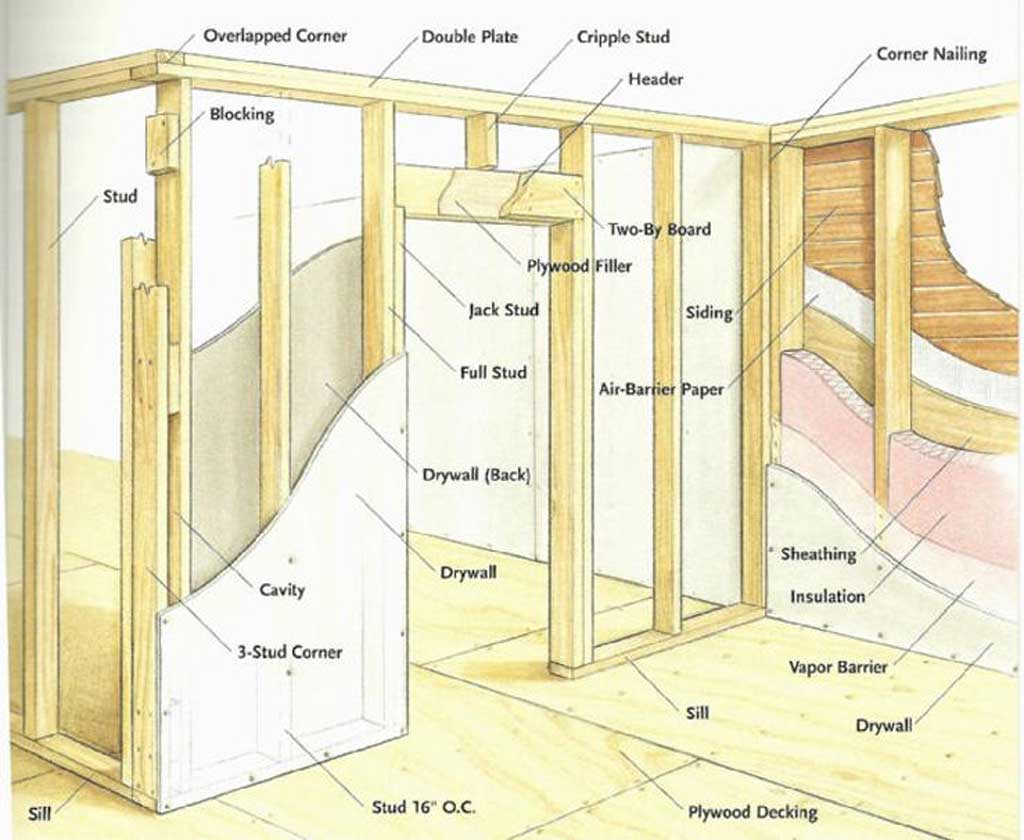
Unit 4 Building Construction
Basic Wall Framing Framing Rough Openings In May, we discussed snapping and squaring layout lines for walls. This Training the Trades segment focuses on laying out and building basic studwalls. We'll cover how to frame window and door openings in the next segment.
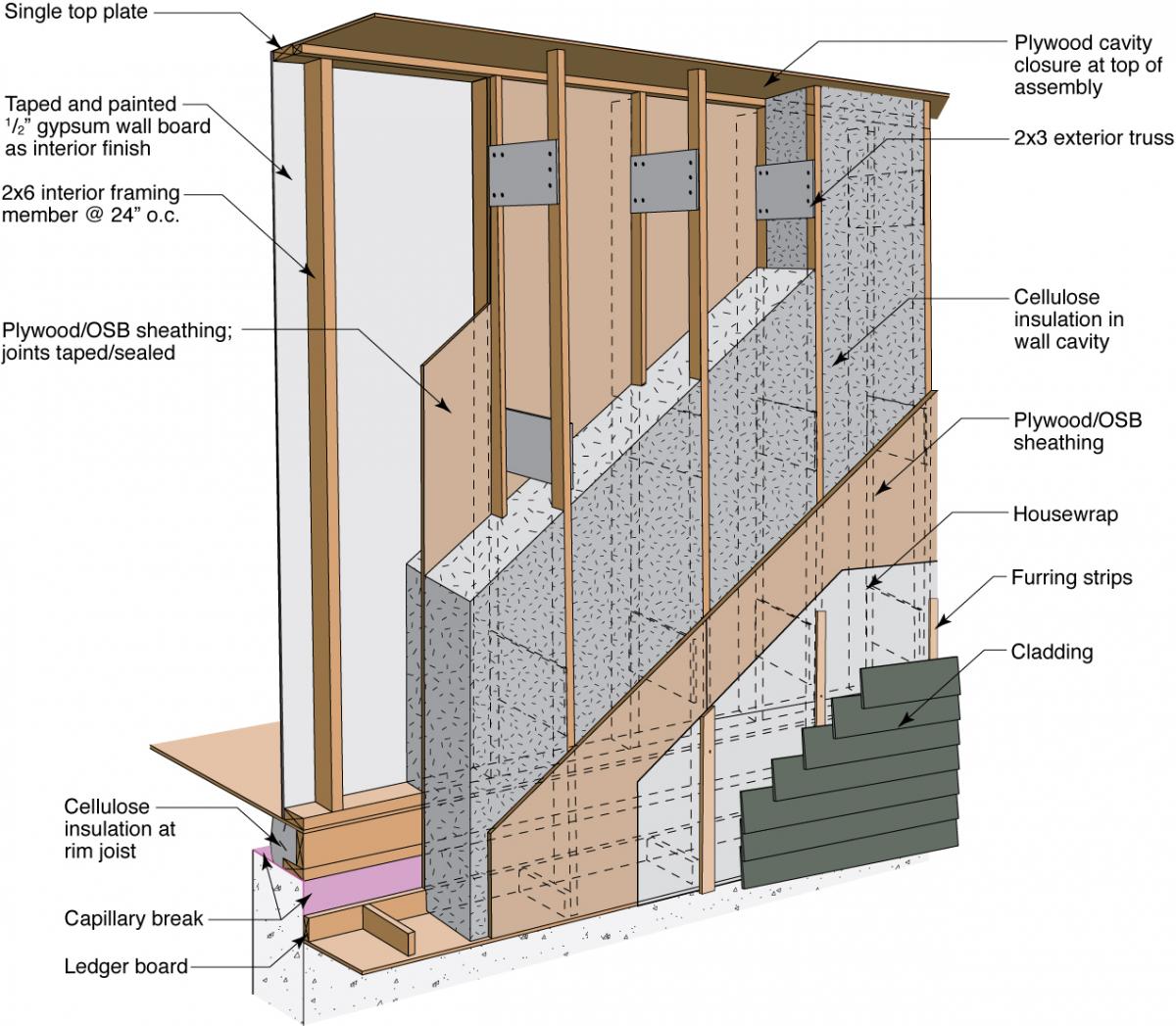
DoubleStud Wall Framing Building America Solution Center
Family Handyman Learn the simple framing techniques that ensure accurately built, tightly framed walls. This article explains how to frame a wall and the basics of marking up and laying out a wall, along with tips about headers, trimmers and studs. By the DIY experts of The Family Handyman Magazine Time A full day Complexity Beginner Cost Varies

Basic Wall Framing JLC Online Framing, Walls, Walls and Ceilings
Wall Framing Calculator with Stud Spacing Diagram - Inch Wall Framing Calculator - Single Wall - Stud Spacing and Sheeting Fit (Width) Length Angle Scale Mark-out Wall Framing Lumber Quantities - Total Wall Length allowing for Corners, Ends, Spaces and Openings Rough Estimate Only. Allow extra for plates, noggings and waste.
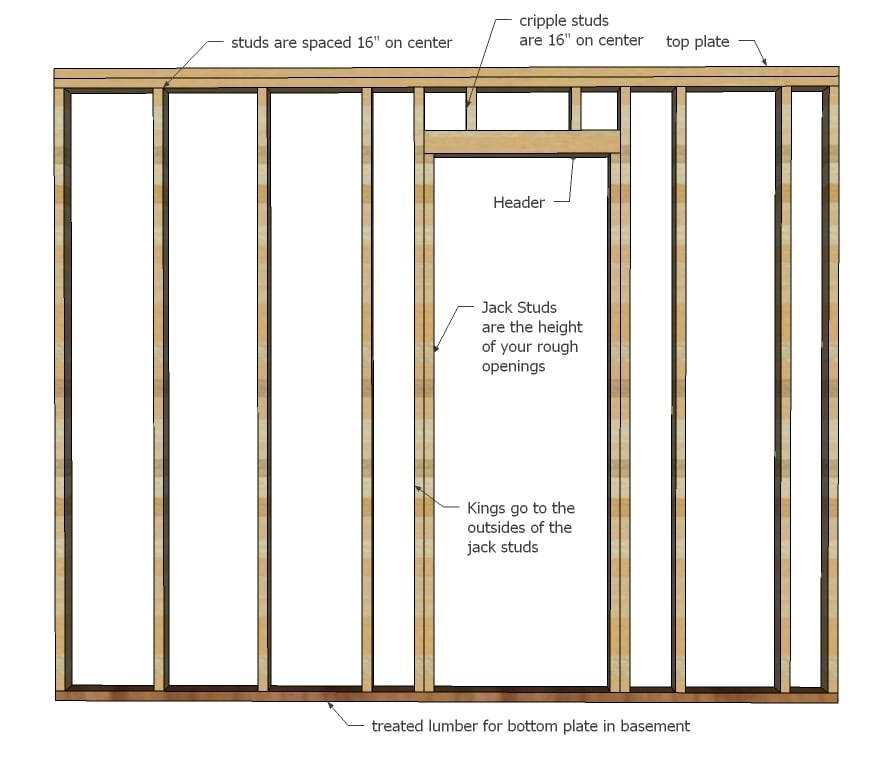
How to Frame Walls Ana White
Hook the end of the tape measure on one end of the stacked plates. Run the tape measure the entire length of the plates to the end and lock it in place. With the pencil, mark every 16-inch increment on the stud until you reach the end of the board. With the Speed Square, run the mark across both plates.
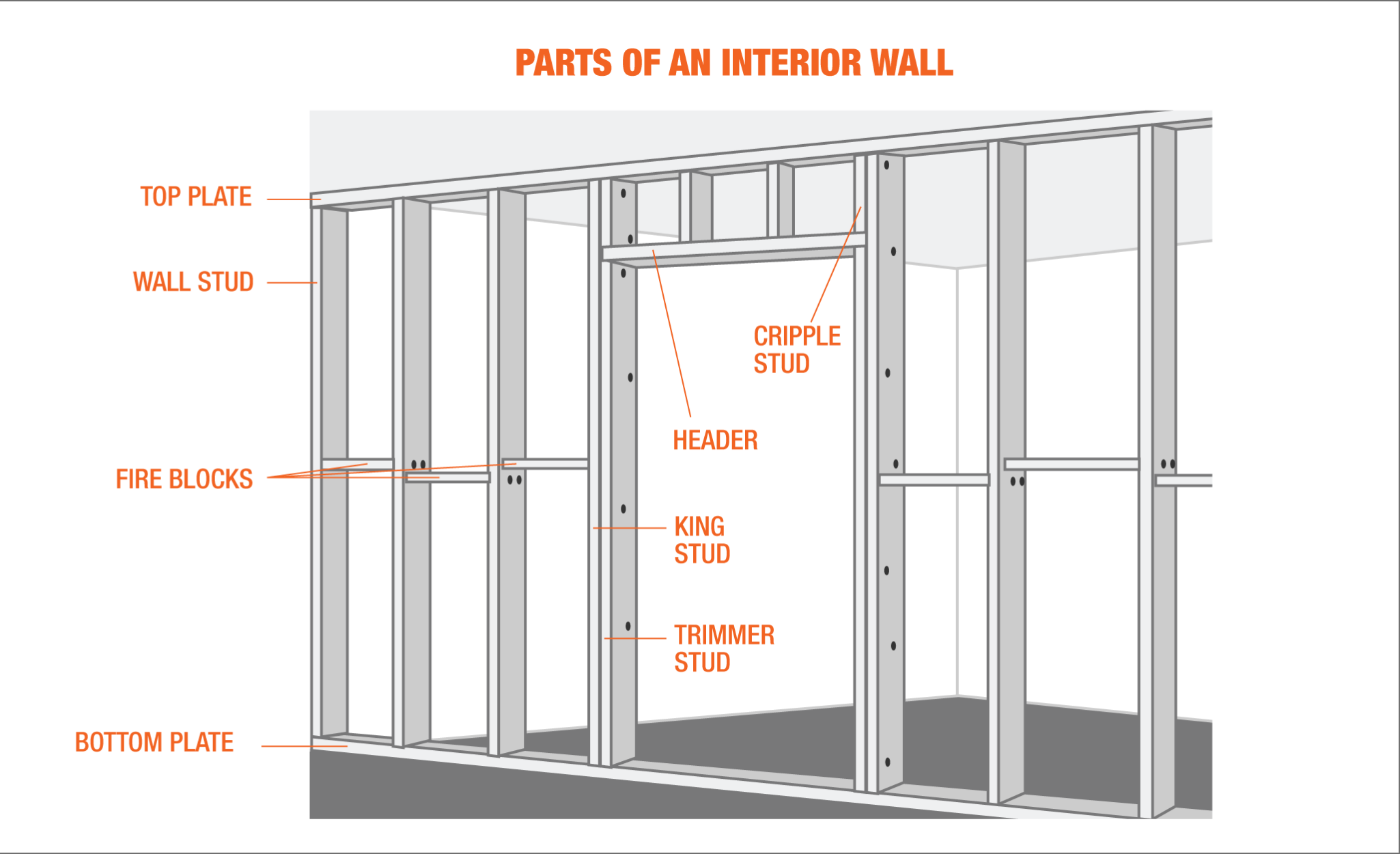
101 Guide to House Framing The Home Depot
1. Determine the location and size of the wall 2. Lay out the wall stud locations 3. Fasten the top plate to the ceiling 4. Position and secure the bottom plate 5. Install the wall studs 6. Form the connections and corners Building an interior wall can be a great way to add privacy and functionality to a space.
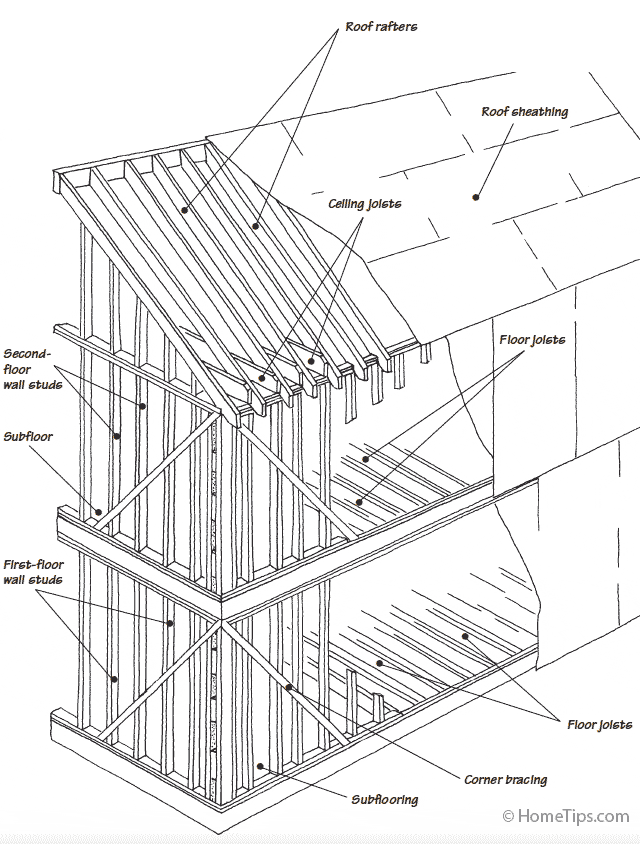
House Framing Diagrams & Methods
Our wall framing calculator is extremely easy to use! You only need two values: The stud OC (on-center) spacing; and; The length of the wall. Remember: The regular OC stud spacing is 16, 19.2, or 24 inches. (OC spacing means measuring the distance between the centers of two adjacent studs.). If you would like to use the price section of our 2x4 calculator, you'll also need to know:

Larson Truss Wall Framing construction, Building a house, Architecture details
Wall-Framing Layout, Step by Step Following a systematic sequence will ensure that your wall framing comes together without any mistakes. By Andy Engel Issue 274 - April/May 2018

The Pros and Cons of Advanced Framing Building a house, Framing construction, Home construction
How it Works: Wall Framing When constructed correctly, a house's frame resists a variety of loads, such as wind and snow. By Rob Munach Issue 214 Synopsis: In this "How It Works" column, engineer Rob Munach defines and describes the components of advanced wall framing.
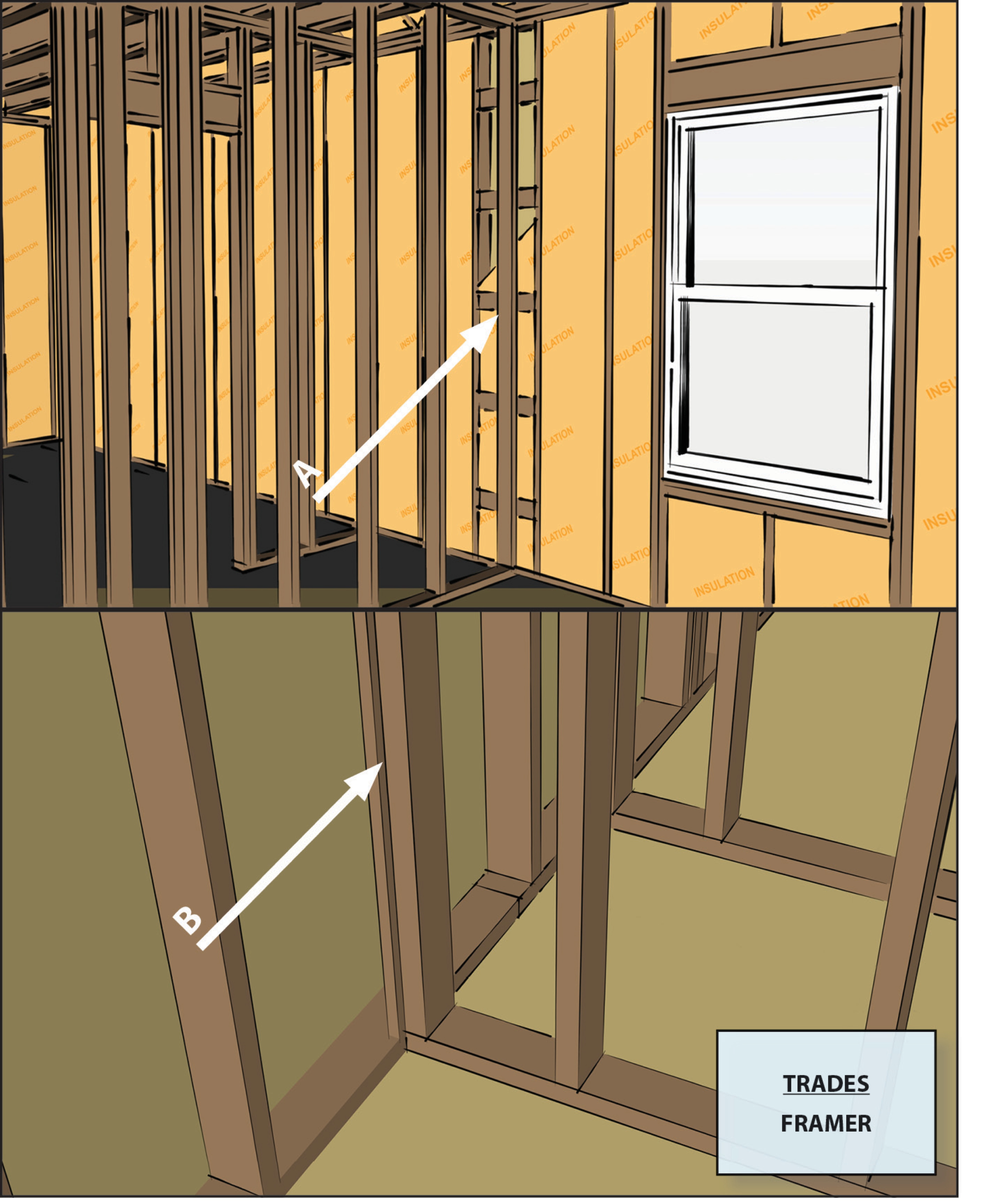
Advanced framing details include framing aligned to allow for insulation at interiorexterior
The diagram above shows two adjacent walls. The one on the left, with headers over the door and window, is load-bearing because it carries the weight of the roof plus the weight of the ceiling (not shown). The connecting wall on the right is non-load-bearing because it does not support any load from the framing above.

Wall Framing Diagram Quizlet
How to Frame a Corner When framing wall corners, try this alternative approach that uses less material and is more energy-efficient. by Chuck Bickford iStock If wall framing is on your to-do list, in addition to planning your layout and gathering materials, it's a good idea to spend a little time considering the corners.

Wall Framing Terms Diagram Quizlet
Basic interior wall-framing components, including drywall, plaster, and panel constructions In the illustration below, you can see an interior wall's basic wall-framing components. Wall studs, typically spaced 16 or 24 inches from center to center, are the vertical supports that run from top to bottom.

Advanced framing techniques using 2x6 lumber 24 inch spacing. WoodworkingPlansTable Framing
1 How to Frame the Floor of a House Residential framing begins with the floor. Do not frame the flooring until the house's concrete foundation has set. Begin by checking local building codes and pulling any necessary permits for residential framing.

HighPerformance Walls Home Power Magazine Roof design, Mansard roof, Construction
Step 1 - Get Started Before you start framing your home or addition, make sure your plans are readily available and easy to read. The plans should give you a good idea of how much lumber you need to purchase for the project. If you're building an addition and have less than 50 studs to buy, then take the time to examine each piece for straightness.
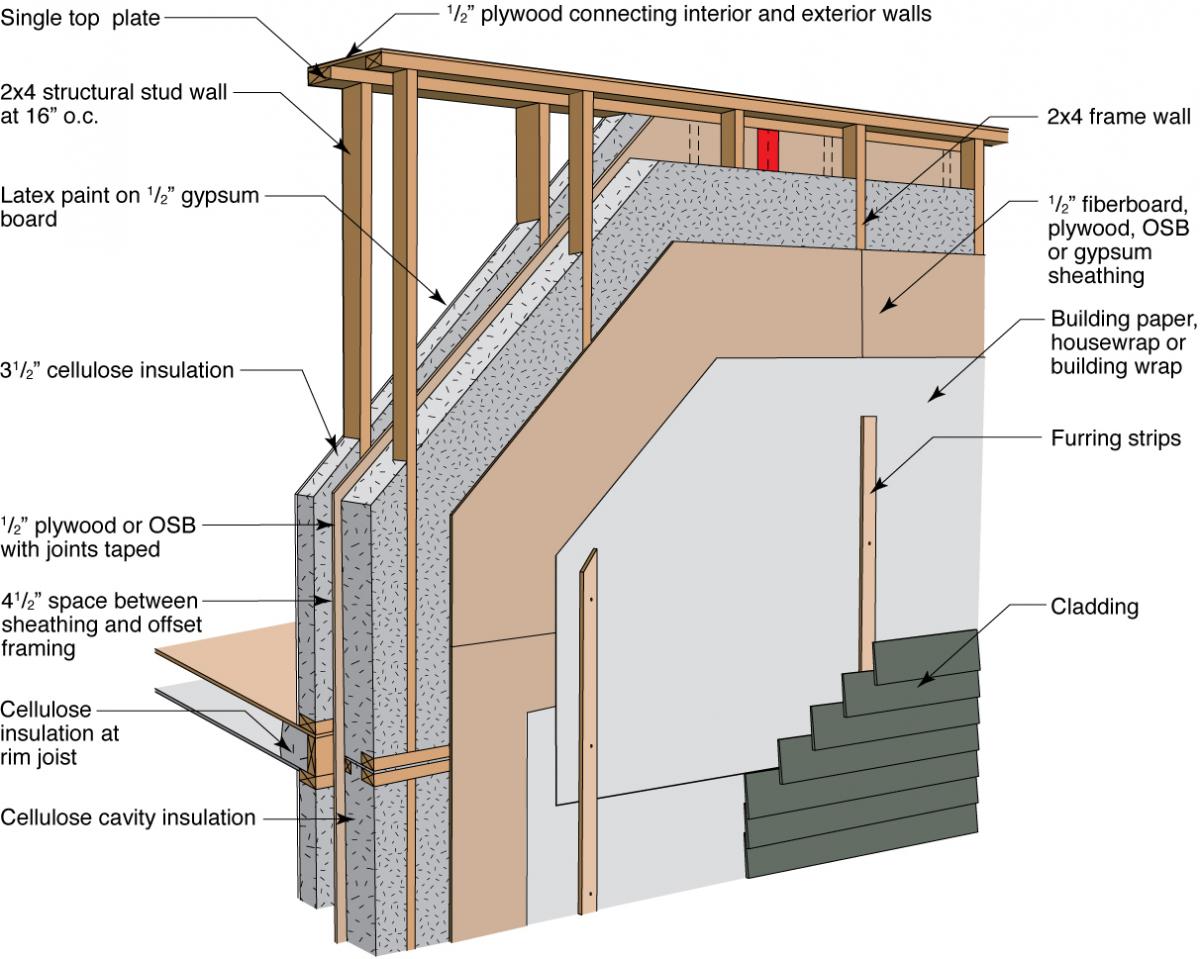
Stud Wall Framing Dimensions Follow accepted building techniques when framing a wall.
Take the shortest ceiling measurement, subtract 3 inches for the thickness of the two plates, and cut all the studs to this length. Calculate the placement for any door opening and cut the jack and cripple studs to length. Build the header and have it ready when you layout the rest of the wall framing. Build the frame with the lumber laying on.

A Better Way to Build Tall Walls Fine Homebuilding
By Matthew Anderson Download the PDF version of this article. (11.92 MB) In the April 2016 issue, we snapped layout lines for all the exterior walls. Step two is cutting the plates and laying out all the framing for the walls. See Also Layout Lines for Exterior Walls Layout for Exterior Wall Framing Building and Raising Exterior Walls

Avoiding Common Framing Errors Fine Homebuilding
The uppermost section of the wall diagram above illustrates the different parts of the surface of an interior wall which is mostly decorative trim, stiles and rails. Stud Wall with Window (aka Framed Wall) The middle section above illustrations a framed or stud wall. It's what you get when you peel off the outer surface, be it drywall or otherwise.